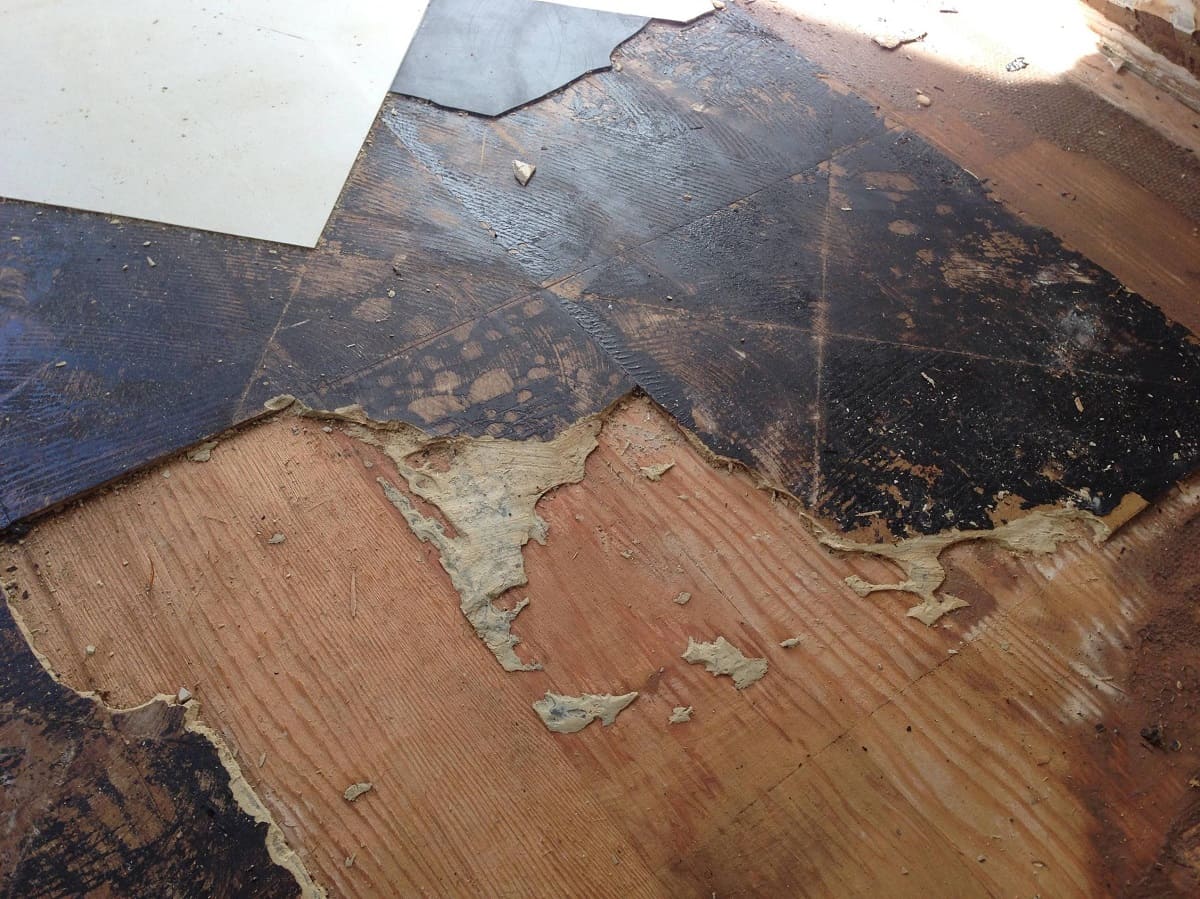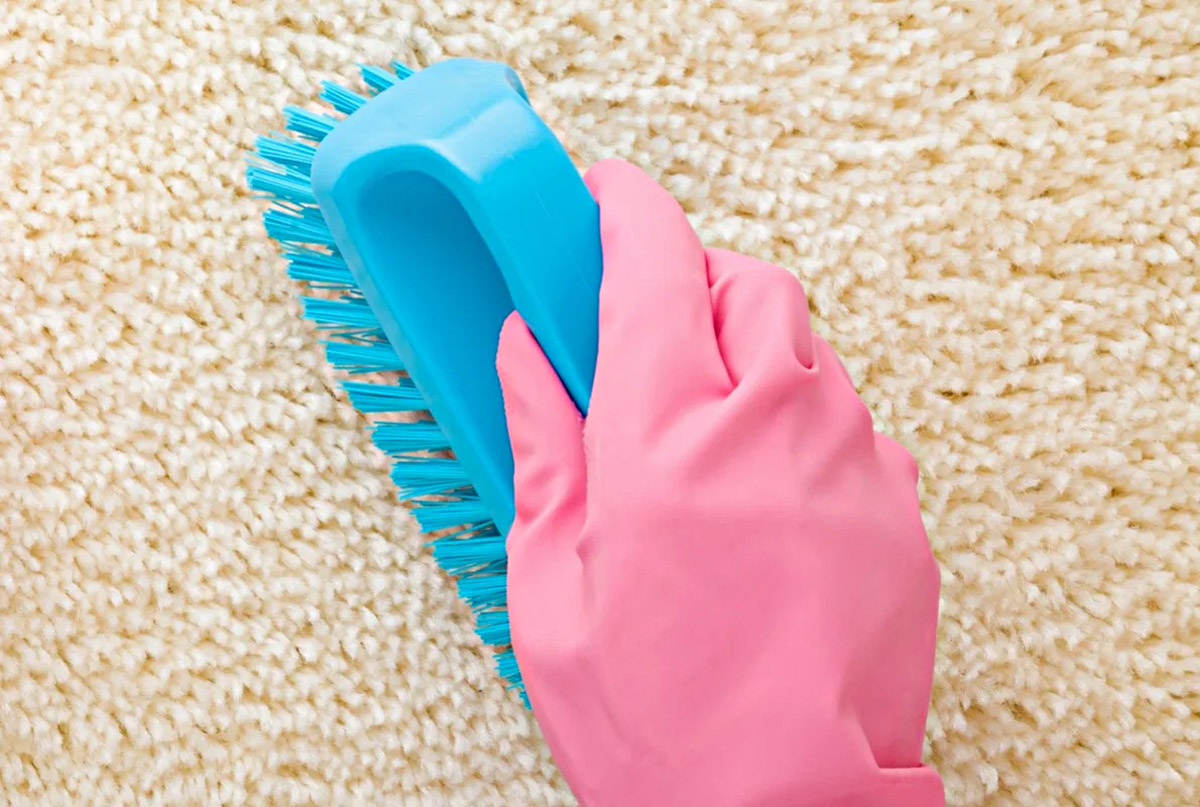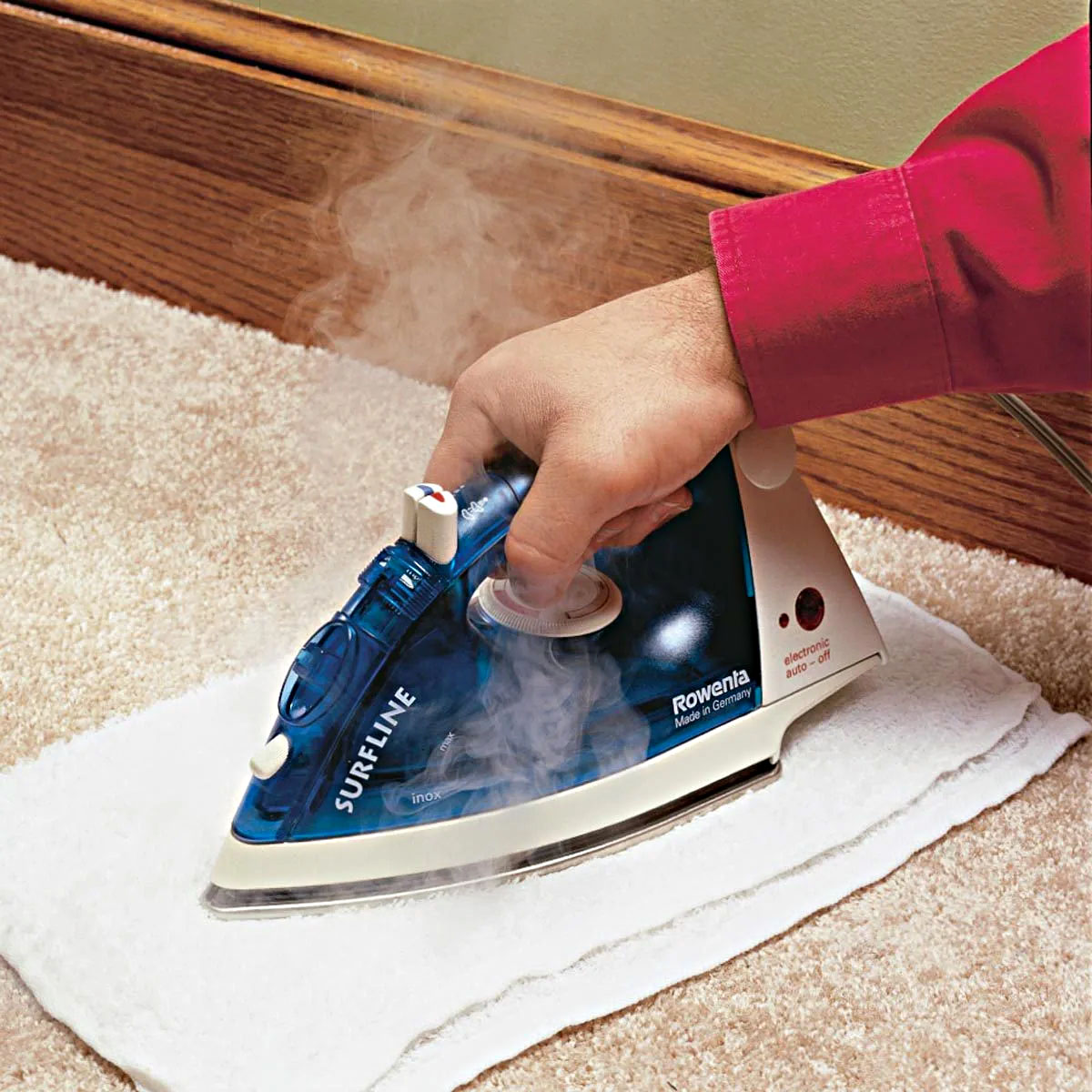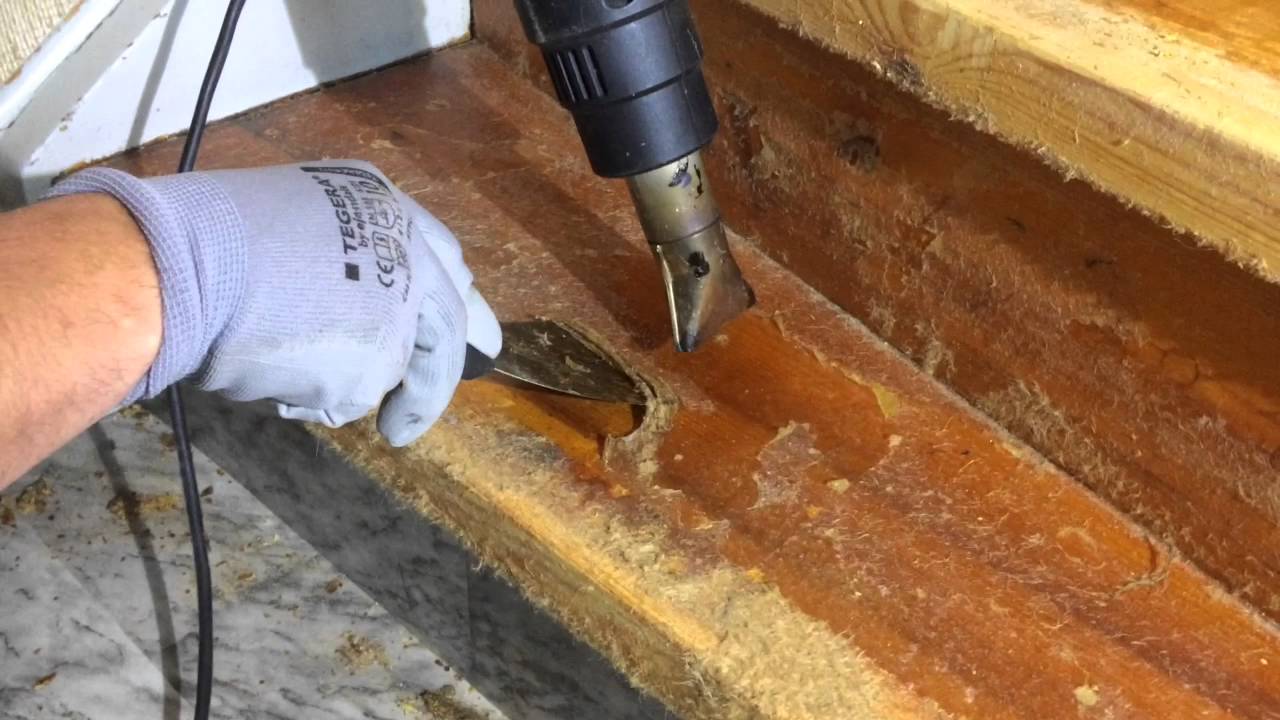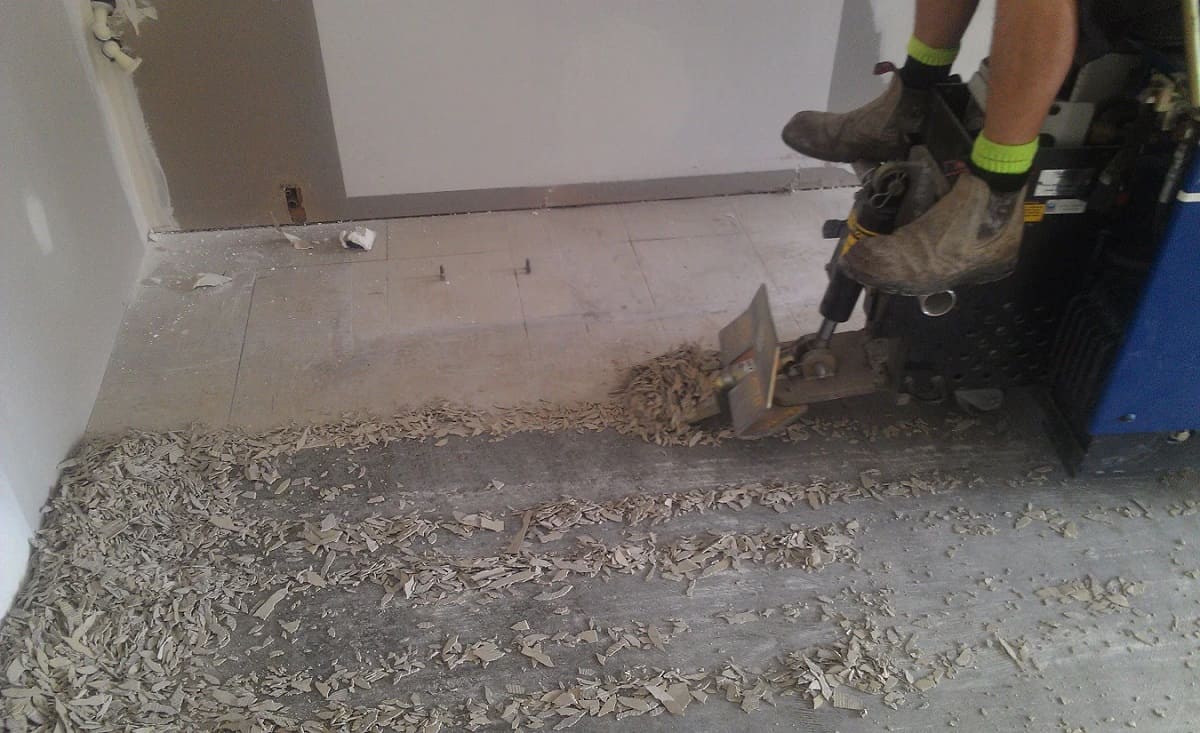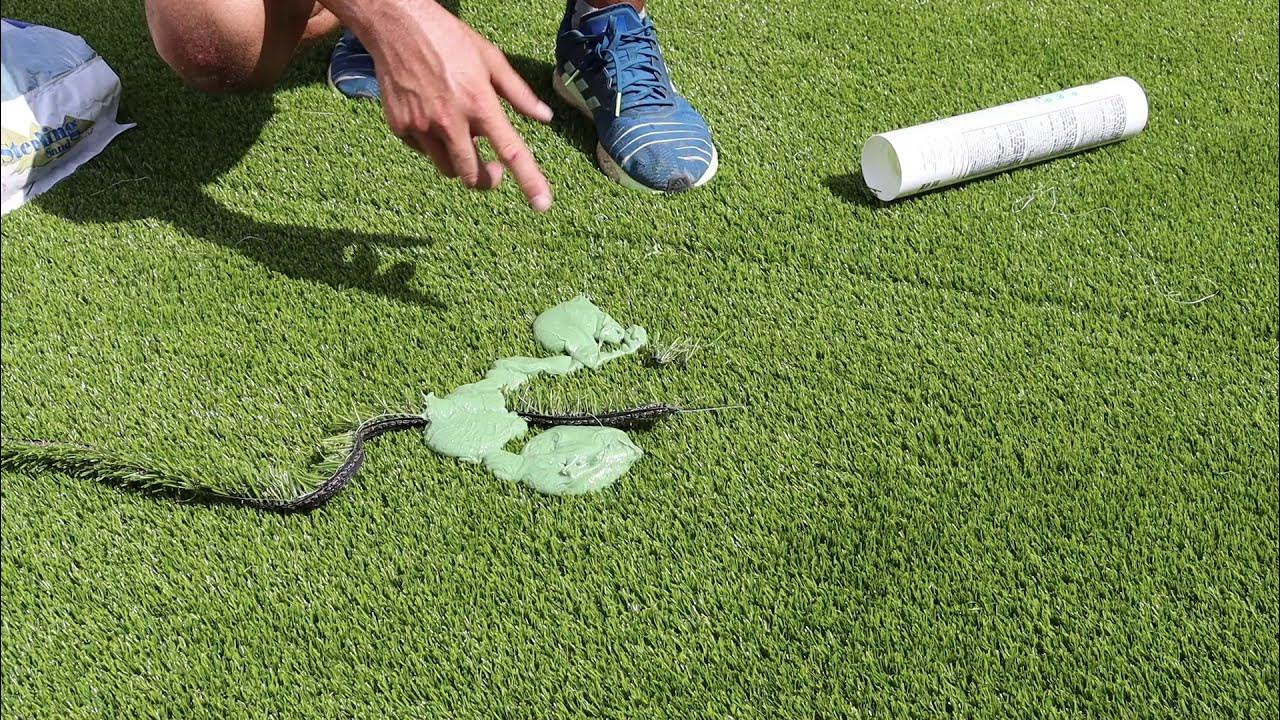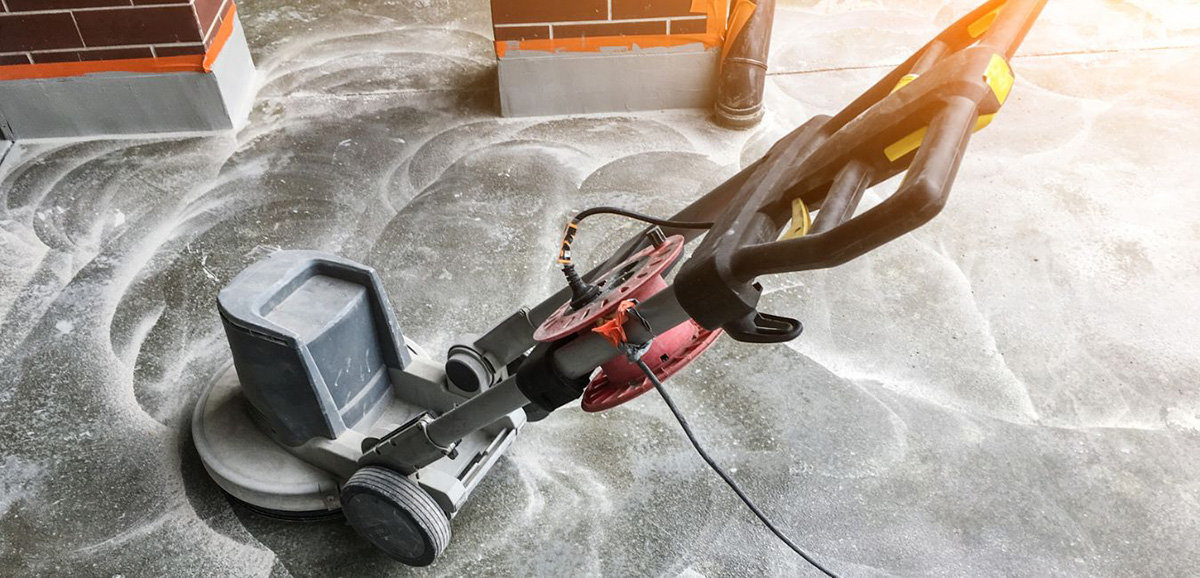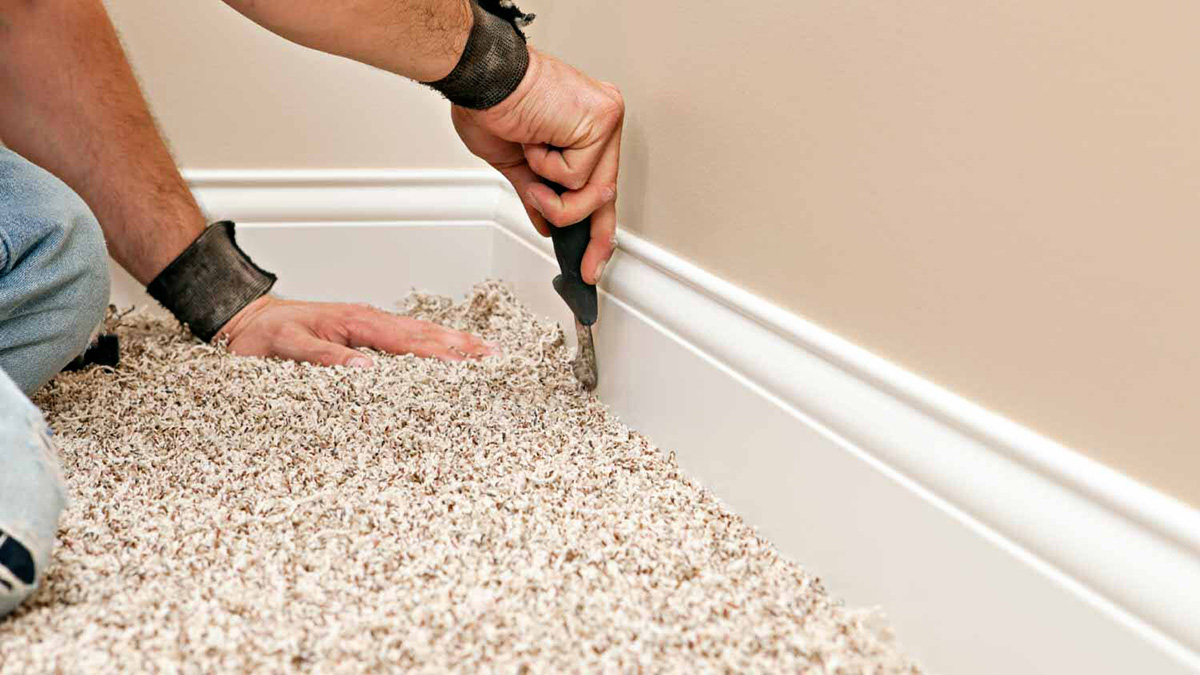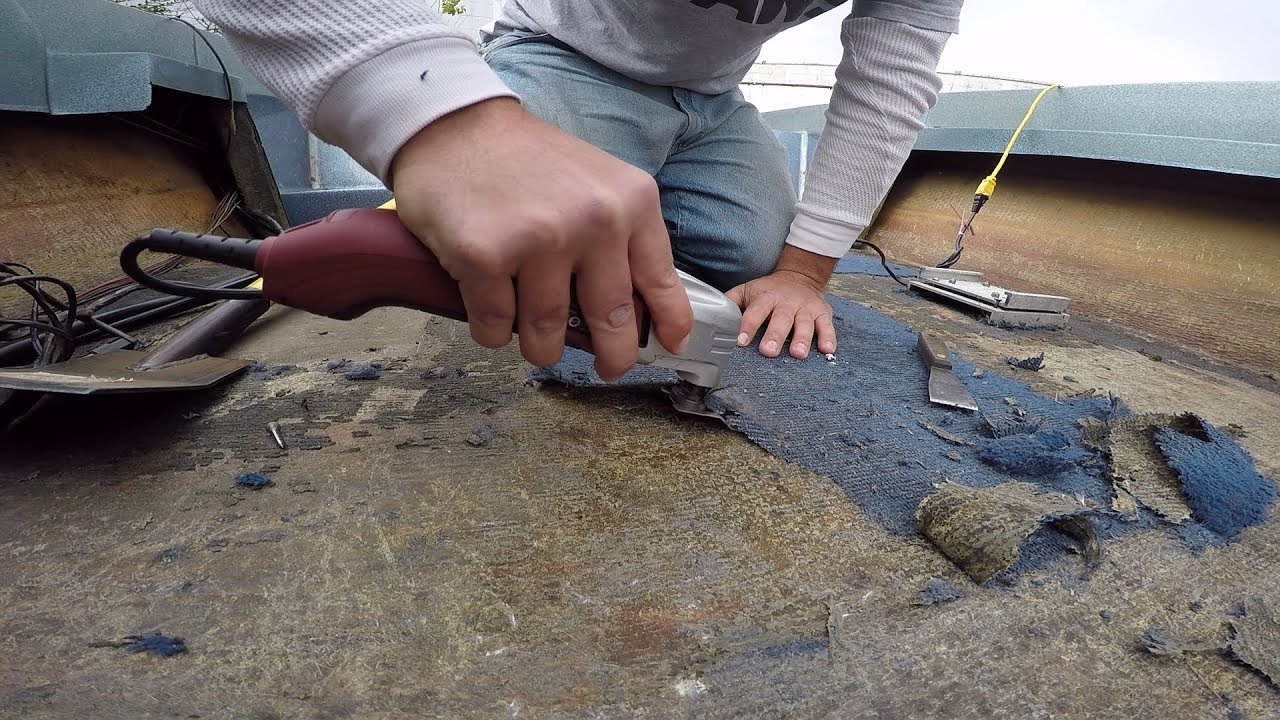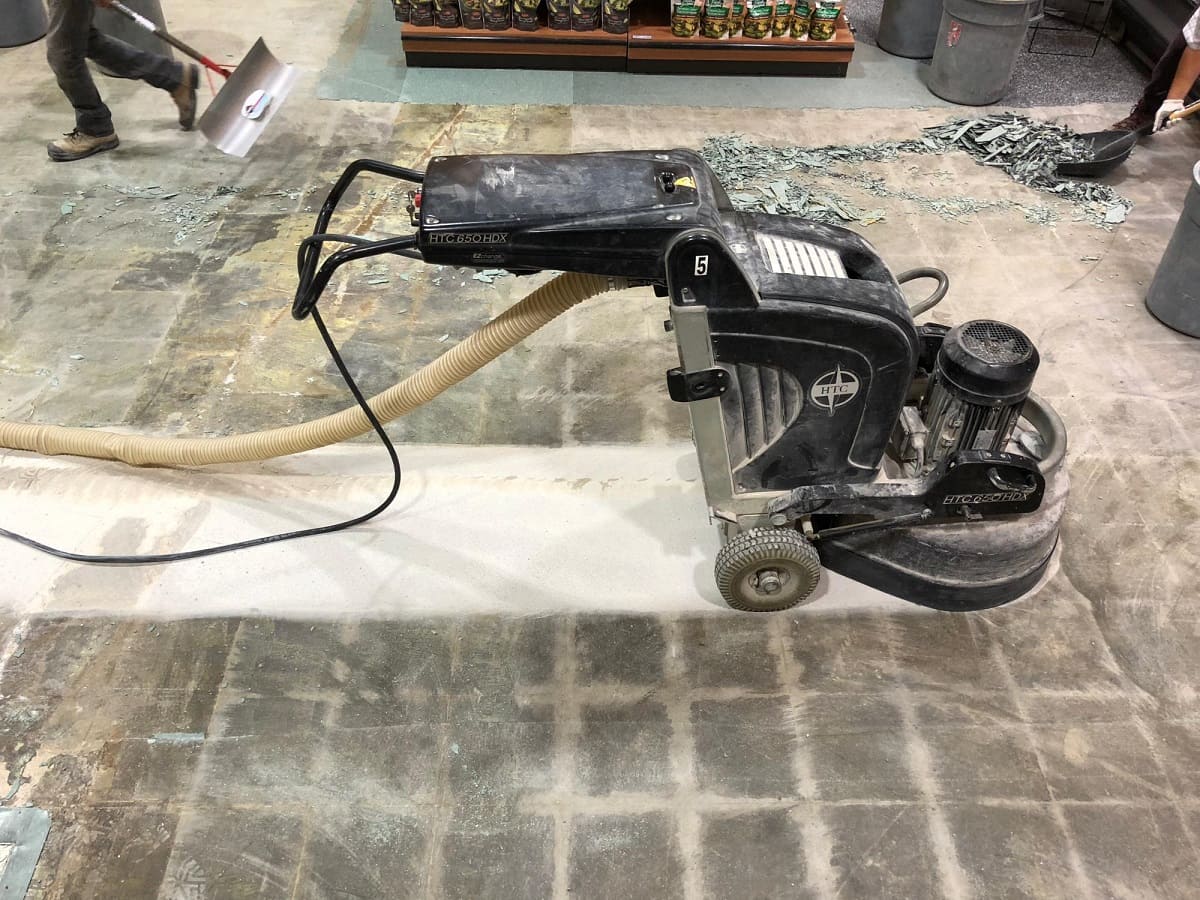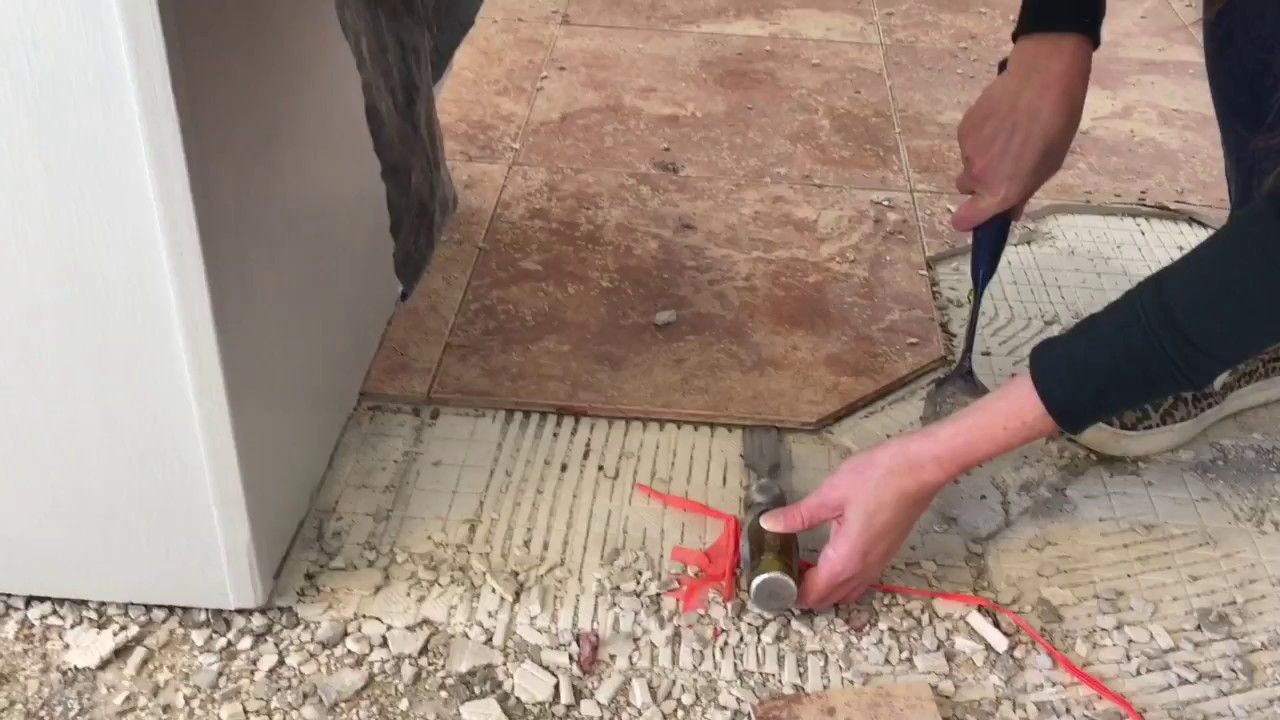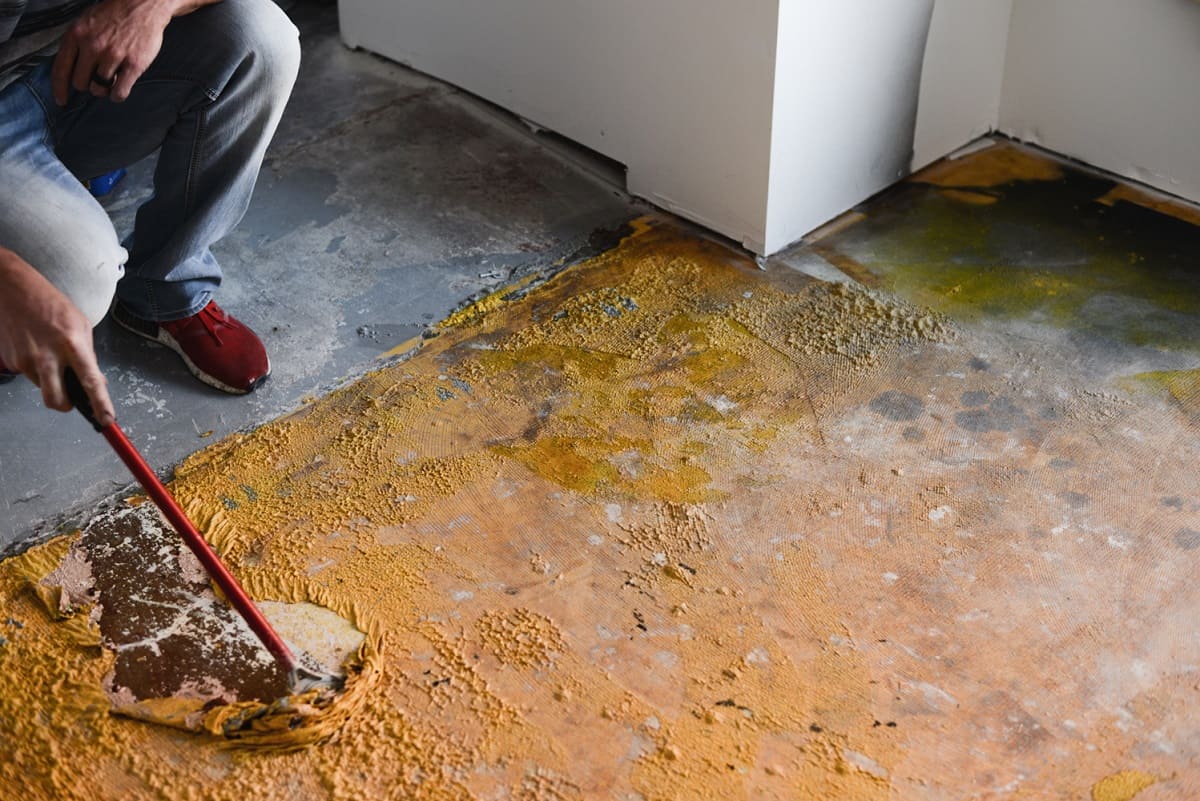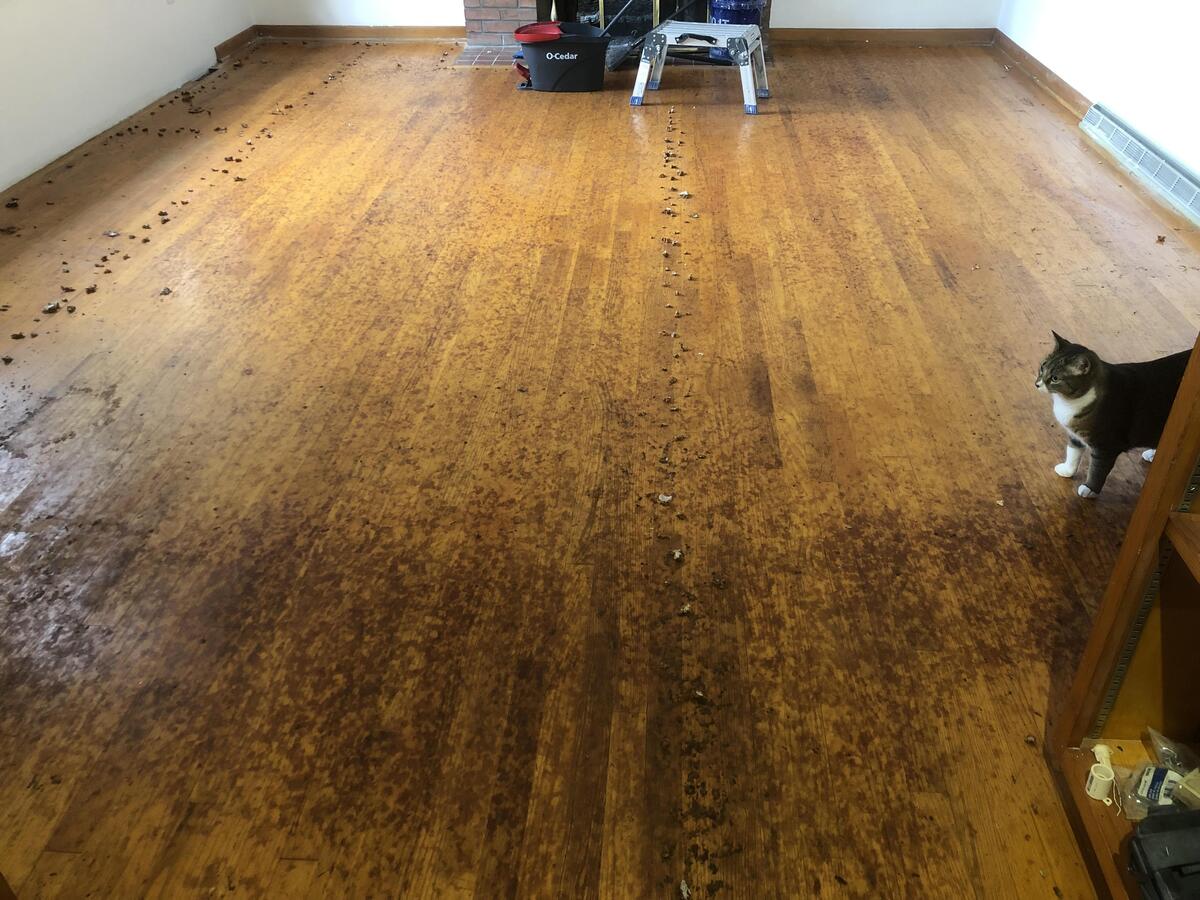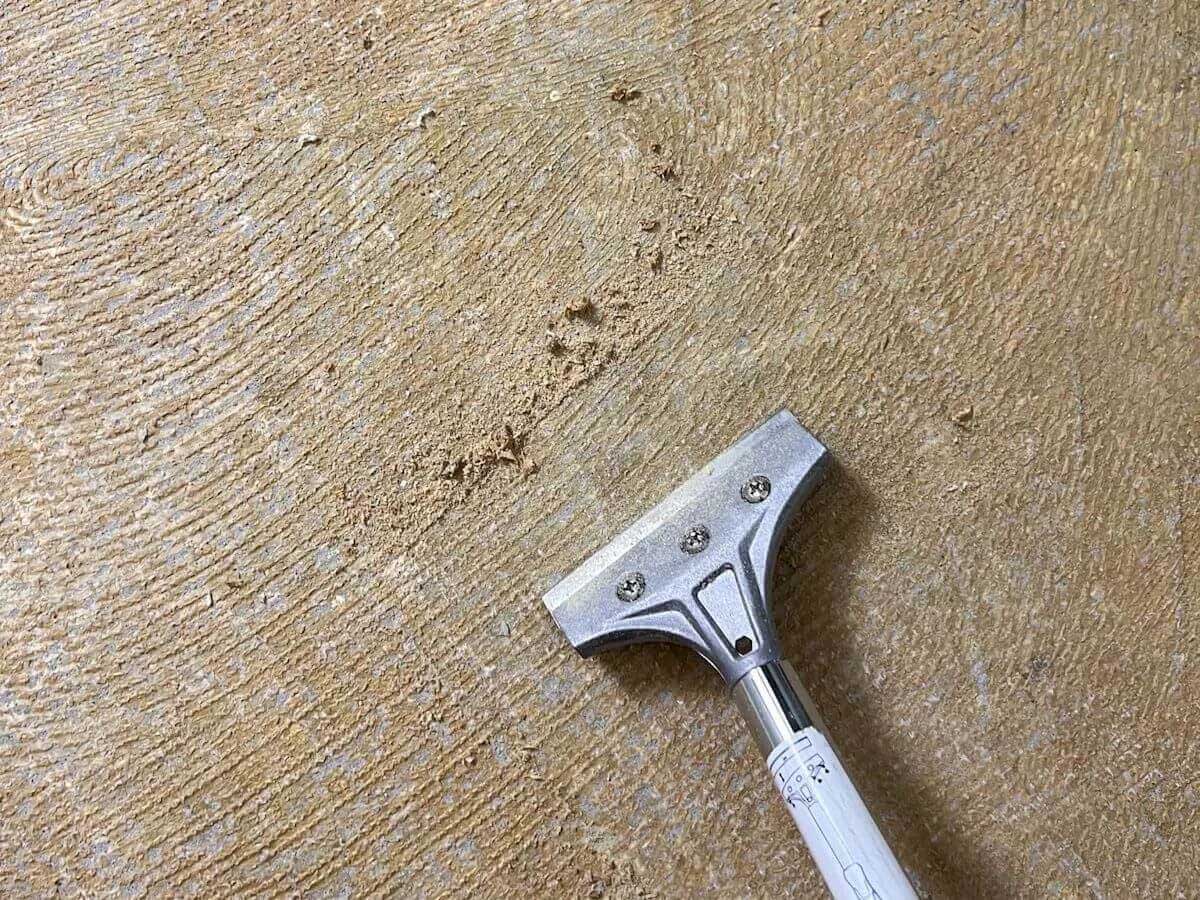

Articles
How To Remove Carpet Glue From Concrete Floor
Modified: October 18, 2024
Learn effective methods to remove stubborn carpet glue from concrete floors with these informative articles. Say goodbye to sticky residue and restore the beauty of your flooring.
(Many of the links in this article redirect to a specific reviewed product. Your purchase of these products through affiliate links helps to generate commission for Storables.com, at no extra cost. Learn more)
Introduction
Removing carpet glue from a concrete floor can be a challenging and time-consuming task. Whether you’re renovating your home or looking to replace old carpeting, getting rid of the stubborn adhesive residue is essential for a smooth and clean surface. Fortunately, with the right materials and a systematic approach, you can effectively remove carpet glue from your concrete floor.
In this article, we will guide you through the step-by-step process of removing carpet glue from a concrete floor. We will cover the necessary materials you’ll need, as well as techniques to make the task easier and more efficient. Prepare to roll up your sleeves and bid farewell to that sticky residue!
Key Takeaways:
- Say goodbye to stubborn carpet glue on concrete floors with the right tools and techniques. Prioritize safety, prepare the area, and follow a systematic process to achieve a clean and adhesive-free surface.
- By carefully assessing the results and repeating necessary steps, you can successfully remove carpet glue from a concrete floor. Prioritize safety, take your time, and enjoy the clean and transformed space you have created!
Read more: How To Remove Old Carpet Glue From Concrete
Materials Needed
Before you begin the carpet glue removal process, you will need to gather a few essential materials. Here’s a list of items you’ll need:
- Protective gloves
- Eye protection
- Putty knife or scraper
- Heat gun or hairdryer
- Chemical adhesive remover
- Scrub brush or sponge
- Bucket
- Warm water
- Clean cloth or mop
Make sure to have these materials on hand before you begin the carpet glue removal process. These tools will help you tackle the task efficiently while ensuring your safety.
Key Takeaways:
- Say goodbye to stubborn carpet glue on concrete floors with the right tools and techniques. Prioritize safety, prepare the area, and follow a systematic process to achieve a clean and adhesive-free surface.
- By carefully assessing the results and repeating necessary steps, you can successfully remove carpet glue from a concrete floor. Prioritize safety, take your time, and enjoy the clean and transformed space you have created!
Read more: How To Remove Old Carpet Glue From Concrete
Materials Needed
Before you begin the carpet glue removal process, it’s important to gather all the necessary materials. Having the right tools on hand will ensure that you can complete the task efficiently and effectively. Here’s a list of the materials you’ll need:
1. Protective gloves: Protect your hands from any potential chemical irritation or injury by wearing protective gloves. Choose gloves that are chemical-resistant and durable.
2. Eye protection: Safeguard your eyes by wearing safety goggles or glasses. This will prevent any splashes or debris from getting into your eyes during the removal process.
3. Putty knife or scraper: A putty knife or scraper is essential for scraping off the carpet glue from the concrete floor. Choose a sturdy and sharp tool that can effectively remove the adhesive without damaging the concrete surface.
4. Heat gun or hairdryer: Applying heat to the carpet glue can help soften it, making it easier to remove. A heat gun or hairdryer will generate the necessary heat to loosen the adhesive. Make sure to use it with caution and follow the manufacturer’s instructions.
5. Chemical adhesive remover: A chemical adhesive remover is a crucial component in the carpet glue removal process. Look for a product specifically designed to remove carpet glue from concrete surfaces. Read and follow the instructions carefully when using the adhesive remover.
6. Scrub brush or sponge: A scrub brush or sponge will be necessary for scrubbing off any remaining residue after scraping off the carpet glue. Choose a brush or sponge with stiff bristles to effectively remove stubborn adhesive particles.
7. Bucket: A bucket will be needed to mix warm water and any cleaning solutions you may use during the process. It will also be useful for rinsing out the scrub brush or sponge.
8. Warm water: Warm water will be required to create a cleaning solution and rinse the area after removing the carpet glue. Ensure that you have access to warm water throughout the process.
9. Clean cloth or mop: Once the carpet glue has been removed, you’ll need a clean cloth or mop to wipe down the floor and remove any remaining residue or cleaning solution. This will leave your concrete floor looking clean and ready for the next step in your flooring project.
By gathering these materials before starting the carpet glue removal process, you’ll be well-prepared to tackle the task efficiently and effectively. Remember to prioritize your safety by wearing gloves and eye protection throughout the process.
Step 1: Prepare the Area
Before you begin the carpet glue removal process, it’s important to prepare the area to ensure a safe and effective operation. Here’s a step-by-step guide on how to prepare the area:
- Clear the area: Remove any furniture, rugs, or other items from the room to create ample space for your work. This will prevent obstacles and allow for easy access to the entire concrete floor.
- Ventilate the room: Since you’ll be using chemical adhesive remover, make sure to open windows and doors or use fans to ensure proper ventilation. This will help minimize the inhalation of any fumes and create a well-ventilated space for your work.
- Protect surrounding surfaces: Lay down a drop cloth or plastic sheeting to protect any adjacent surfaces or baseboards from accidental spills or drips. The adhesive remover can be liquid and may seep into crevices, so it’s important to protect the surrounding areas.
- Wear protective gear: Put on your protective gloves and eye protection before you start working with any chemicals or tools. This will safeguard your skin and eyes from any potential irritants or injuries.
By following these steps, you’ll create a safe and well-prepared environment for the carpet glue removal process. Now that you’ve prepared the area, you’re ready to move on to the next step: scraping off the carpet glue.
Step 2: Scrape off the Carpet Glue
Now that you have prepared the area, it’s time to start removing the carpet glue from the concrete floor. Follow these steps to effectively scrape off the adhesive:
- Begin at a corner: Start at one corner of the room or a small section of the floor. This will allow you to focus on a manageable area and gradually work your way across the entire floor.
- Use a putty knife or scraper: Take your putty knife or scraper and apply firm pressure to gently scrape off the carpet glue. Hold the tool at a low angle to avoid gouging or damaging the concrete surface. Work in small sections, about a few square feet at a time, to ensure thorough removal.
- Scrape in different directions: For stubborn or thick layers of carpet glue, try scraping in different directions to loosen it. This will help break up the adhesive and make it easier to remove. Keep in mind to always work with the tool in a controlled manner to avoid accidents or injuries.
- Remove the scraped residue: As you scrape off the carpet glue, periodically remove the debris and residue. Use a brush or dustpan to collect the scraped-off adhesive and dispose of it properly. Continue scraping and clearing the area until you have covered the entire floor.
- Inspect for any remaining glue: After you have finished scraping off the carpet glue, inspect the floor for any traces of remaining adhesive. Use your fingers or the edge of the putty knife to gently feel for any sticky or raised areas. If you find any, repeat the scraping process to ensure a smooth surface.
Remember to work methodically and take breaks if needed, especially if you have a large area to cover. It’s essential to maintain a steady and controlled pace to avoid causing damage to the concrete floor. Once you have successfully scraped off the carpet glue, you’re ready to move on to the next step: applying heat to further loosen the adhesive.
Step 3: Apply Heat
After scraping off the carpet glue, applying heat can help further loosen any remaining adhesive and make the removal process easier. Follow these steps to effectively apply heat to the area:
- Choose the right heat source: Depending on the size and accessibility of the area, you can use a heat gun or a hairdryer. A heat gun provides more heat intensity, while a hairdryer offers a milder heat output.
- Hold the heat source at a safe distance: Hold the heat gun or hairdryer at a safe distance from the floor, generally around four to six inches away. This will prevent the concrete from getting too hot and potentially causing damage.
- Apply heat to the adhesive residue: Direct the heat source towards the area with adhesive residue, moving it back and forth in a sweeping motion. The heat will soften the glue, making it easier to remove.
- Scrape off the softened adhesive: While the glue is still warm, use a putty knife or scraper to gently scrape off the softened adhesive. Be cautious not to apply excessive pressure, as this can damage the concrete surface.
- Continue the process: Repeat the process of applying heat and scraping in small sections until you have covered the entire floor. Take breaks as needed to avoid overheating the floor or straining your arms.
Applying heat can be particularly effective for stubborn or older carpet glue that is more resistant to scraping alone. The heat softens the adhesive, making it easier to remove and leaving less residue behind. However, always exercise caution when working with heat tools, and follow the manufacturer’s instructions for safe use.
Once you have applied heat to further loosen the adhesive, you can proceed to the next step: using a chemical adhesive remover to tackle any remaining residue.
Use a floor scraper to remove as much glue as possible. Then, apply a commercial adhesive remover and let it sit for the recommended time before scraping off the softened glue. Finally, clean the area with a degreaser and hot water.
Step 4: Use a Chemical Adhesive Remover
In the carpet glue removal process, using a chemical adhesive remover is an effective way to dissolve and break down any remaining residue. Follow these steps to safely and efficiently use a chemical adhesive remover:
- Select an appropriate adhesive remover: Choose a chemical adhesive remover that is specifically designed for removing carpet glue from concrete surfaces. There are various options available, such as citrus-based removers or solvent-based removers. Read and follow the manufacturer’s instructions for the chosen product.
- Apply the adhesive remover: Pour the adhesive remover directly onto the remaining adhesive residue, ensuring that you cover the area thoroughly. Use a brush or sponge to spread it evenly, ensuring that the adhesive is completely saturated.
- Allow the remover to penetrate: Depending on the product’s instructions, let the adhesive remover sit on the glue for the recommended amount of time. This allows the chemical to penetrate and break down the adhesive.
- Scrape off the softened residue: Once the adhesive remover has had sufficient time to work, use a putty knife or scraper to gently scrape off the softened residue. Work in small sections and be careful not to damage the concrete surface.
- Repeat if necessary: If there is still residual adhesive remaining, repeat the process by applying more adhesive remover and allowing it to penetrate. Continue scraping off the softened residue until the area is clear of any glue.
- Clean the area: After removing the adhesive, thoroughly clean the area with warm water and a scrub brush or sponge. This will help remove any leftover residue from the adhesive remover and ensure a clean surface.
Using a chemical adhesive remover can be a highly effective way to tackle stubborn or stubborn carpet glue. However, it’s essential to read and follow the manufacturer’s instructions for safe and proper use. Additionally, ensure proper ventilation and use protective gloves and eye protection while working with chemical products.
Once you have used the adhesive remover to remove any remaining residue, you’re ready to move on to the next step: scrubbing the area to ensure a thorough cleaning.
Step 5: Scrub the Residue
After using a chemical adhesive remover to dissolve the remaining carpet glue, it’s time to scrub off any residual residue. Follow these steps to effectively scrub the area and ensure a thorough cleaning:
- Prepare a cleaning solution: Mix warm water with a mild detergent or a floor cleaner suitable for your concrete surface. Follow the product instructions for the appropriate dilution ratio.
- Dip a scrub brush or sponge: Submerge a scrub brush or sponge into the cleaning solution, ensuring it is fully saturated.
- Scrub the area: Starting in one corner, scrub the floor using a circular motion. Apply moderate pressure to effectively remove any remaining adhesive residue. Work in small sections, focusing on areas with noticeable residue.
- Pay attention to stubborn spots: For stubborn or hard-to-remove spots, apply extra pressure and scrub more vigorously. You can also let the cleaning solution sit on these areas for a few minutes to help break down the residue.
- Rinse the scrubbed area: Once you have finished scrubbing, rinse the area with clean water. This will remove any excess cleaning solution and ensure a residue-free surface.
- Repeat if necessary: If there is still residue remaining, repeat the scrubbing process with fresh cleaning solution. Focus on problem areas until the floor is clean and free of any adhesive residue.
Scrubbing the floor helps remove any last traces of the carpet glue and ensures a smooth and clean surface for further applications. Remember to work in a well-ventilated area and wear protective gloves when handling the cleaning solution.
Now that you have successfully scrubbed off the residue, you’re ready for the next step: rinsing the area to remove any remaining cleaning solution and assess the results of your hard work.
Step 6: Rinse the Area
After scrubbing off the adhesive residue, it’s important to rinse the area to remove any remaining cleaning solution and assess the results of your carpet glue removal process. Follow these steps to effectively rinse the area:
- Prepare clean water: Fill a bucket with warm water.
- Soak a clean cloth or mop: Dip a clean cloth or mop into the bucket of water, ensuring it is fully saturated.
- Wring out excess water: Squeeze out any excess water from the cloth or mop so that it is damp but not dripping wet.
- Wipe or mop the floor: Starting from one corner, wipe or mop the floor using the damp cloth or mop. Move in a back-and-forth motion, covering the entire area where you removed the carpet glue.
- Pay attention to corners and edges: Ensure you thoroughly wipe or mop the corners and edges of the floor, as these areas can sometimes collect residue or cleaning solution.
- Change the water if necessary: If the water becomes too dirty or soapy, empty the bucket and refill it with fresh, clean water.
- Rinse again: Repeat the wiping or mopping process with clean water until you are confident that all cleaning solution and residue have been removed.
Rinsing the area is crucial to remove any residue from the cleaning solution and leave your concrete floor clean and ready for the next step in your flooring project. Take your time to ensure that you thoroughly rinse the entire area and don’t leave behind any cleaning solution.
After you have rinsed the area, take a moment to evaluate the results of your hard work and assess whether any additional steps are necessary. If you notice any lingering residue or spots, you may need to repeat the cleaning or adhesive removal process in those areas.
Now that you have successfully rinsed the area and evaluated the results, you’re ready to move on to the final step: examining the floor to ensure that all the carpet glue has been effectively removed.
Read more: How To Remove Glue From Concrete Porch
Step 7: Assess the Results
After completing the carpet glue removal process, it’s important to take a moment to assess the results and ensure that all the adhesive has been effectively removed. Follow these steps to assess the final outcome:
- Inspect the floor: Carefully examine the entire concrete surface to check for any remaining adhesive residue. Look for any areas where the glue might still be visible or where the surface feels sticky.
- Feel for rough or uneven spots: Run your hand over the floor to detect any rough or uneven areas that could indicate leftover remnants of carpet glue. Pay close attention to corners, edges, and areas with heavy adhesive buildup.
- Check for discoloration: Look out for any discoloration on the concrete floor, as it may indicate areas where the adhesive residue has not been fully removed. These areas may appear darker or discolored compared to the rest of the floor.
- Repeat the process if needed: If you find any remaining adhesive residue, rough spots, or discoloration, you may need to repeat specific steps in the carpet glue removal process. Focus on those areas and follow the appropriate steps, such as scraping, applying heat, or using an adhesive remover.
- Seek professional assistance if necessary: If you encounter stubborn adhesive residue that you cannot remove on your own, or if the concrete floor has been significantly damaged during the removal process, it may be best to seek professional assistance. A professional can provide expertise and specialized tools to address the issue effectively.
It’s important to ensure that all the carpet glue has been removed before proceeding with any further flooring installations or treatments. A clean and adhesive-free surface will provide a solid foundation for your next flooring project.
By carefully assessing the results of your carpet glue removal process, you can address any remaining areas of concern and ensure a smooth and successful transition to the next phase of your flooring endeavor.
Congratulations on completing the carpet glue removal process! With a clean and adhesive-free concrete floor, you’re now ready to proceed with your desired flooring installation or any other plans you have for the space.
Remember to take proper care of your tools and dispose of any adhesive residue or cleaning solutions responsibly. With your determination and attention to detail, you have successfully removed the carpet glue and achieved a clean and inviting space!
Conclusion
Removing carpet glue from a concrete floor can be a challenging task, but with the right approach and tools, it can be accomplished successfully. By following the steps outlined in this article, you can effectively scrape off the adhesive, apply heat to loosen residue, use a chemical adhesive remover, scrub away any remaining residue, rinse the area, and assess the results.
Throughout the process, it’s important to prioritize your safety by wearing protective gear such as gloves and eye protection. Proper preparation, ventilation, and using the right tools will ensure a smooth and efficient glue removal process. Take your time and work in small sections to avoid damaging the concrete surface.
By carefully following these steps, you can achieve a clean and adhesive-free concrete floor, ready for further flooring installations or other projects. Remember to assess the results and repeat any necessary steps to ensure an optimal outcome. If you encounter stubborn residue that you cannot remove or extensive damage to the floor, don’t hesitate to seek professional assistance.
With your hard work and dedication, you can successfully remove carpet glue from a concrete floor and create a clean and appealing space. Whether you’re renovating your home or preparing for a new flooring installation, a smooth and adhesive-free surface will offer a solid foundation for your next project.
Remember to dispose of any adhesive residue or cleaning solutions properly and take pride in your accomplishment. Pat yourself on the back for a job well done and enjoy the clean and transformed space you have created!
Frequently Asked Questions about How To Remove Carpet Glue From Concrete Floor
Was this page helpful?
At Storables.com, we guarantee accurate and reliable information. Our content, validated by Expert Board Contributors, is crafted following stringent Editorial Policies. We're committed to providing you with well-researched, expert-backed insights for all your informational needs.
